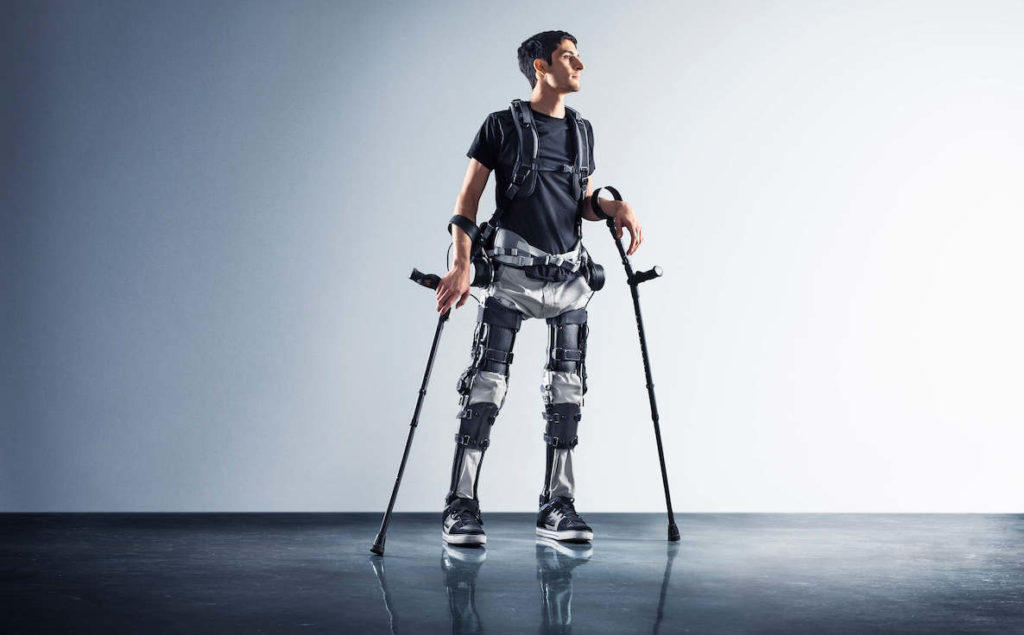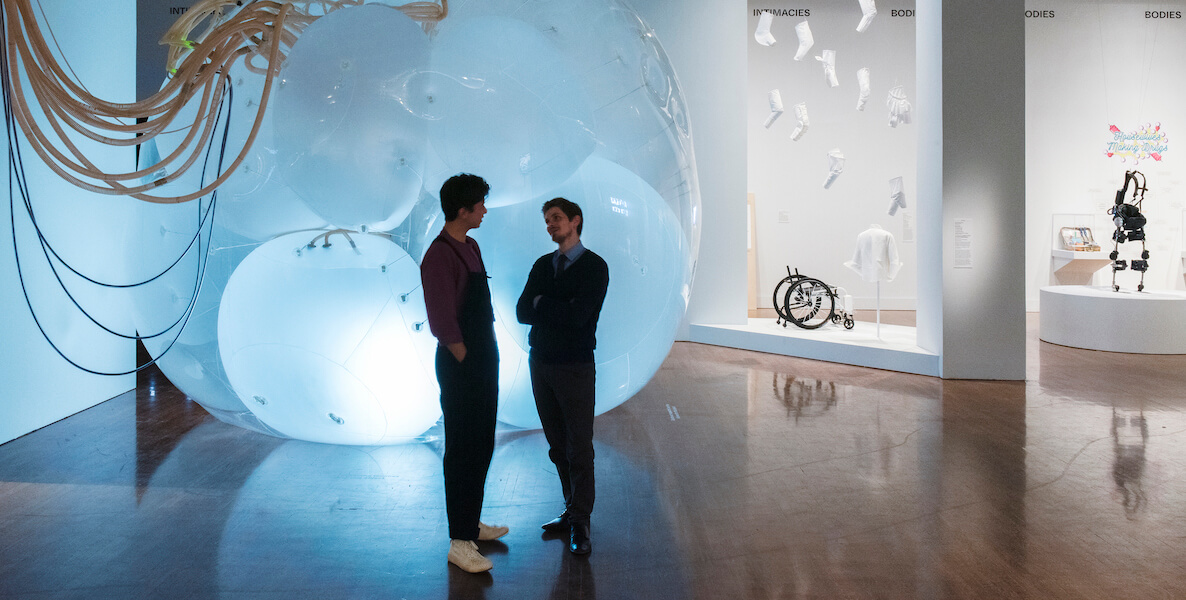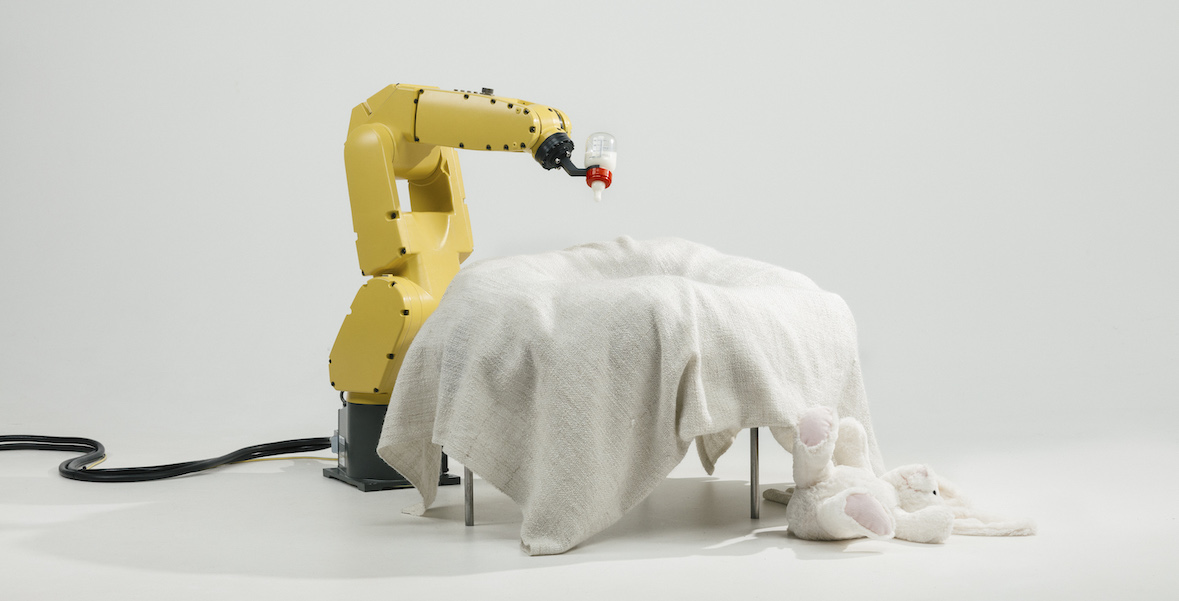In some ways, Philadelphia is a trust fund town, collecting residuals from the universities, hospitals and the museums built by generations before us. While we have staked our very identity on a history that is central to American myth-making, we have for too long been dishearteningly stuck in the quicksand of that history. As the pace of change around the world seems to be accelerating at a dizzying rate, we seem to be stuck in time. Like a wound that won’t heal, our city’s poverty rate festers at more than 25 percent, while elsewhere, municipalities are making bold moves, engaging public-private partnerships and kicking the legs out from under old hierarchies. Philadelphia remains bogged down in the conflicts and factionalism that may have had meaningful currency half a century ago, but which do nothing today but stymie hope of effecting real political, economic and social change.
Visit "Designs for Different Futures" at PMADo Something
These monuments, flocked to by visitors from around the country and the globe, are largely derided by us locals as little more than centers of traffic congestion as we try to navigate Market Street East around horse carriages and selfie-snapping gawkers. Meanwhile, our civic consciousness seems stranded in a more recent but staler history, the cynical era of mid-20th-century machine politics malaise and the small ball corruption of petty power brokers endlessly on the make.
Now, when just about everything seems tenuous and contingent, and the future up for grabs, there is an unprecedented opportunity for radical ideas, actors, and yes, cities to emerge bravely at the vanguard of a new world order whose landscape is yet to be defined.
It was this frame of mind that preoccupied me as I visited the Philadelphia Museum of Art’s mind-blowing “Designs for Different Futures” exhibition earlier this fall. As worthwhile art should be, but so rarely is, the installations of “Different Futures” are deeply resonant and profoundly unsettling. To attempt to describe the exhibits here couldn’t possibly do them justice (the exhibition runs through March and is an absolute must-see), but their emphases—technology, food, work, bodies, sex, authority, ecology, extinction and alienation—were disorienting, and frankly, more than a little dispiriting even to an inveterate optimist. [Full disclosure: I sit on the PMA’s board of directors, and the Pamela & Ajay Raju Foundation supported a student essay contest whose winner helped the museum purchase a piece in the exhibit.]
The underlying theme of the exhibition makes the case that people, with our singular capacity for creativity, imagination, experimentation and the transformation of the world around us, have let our intellectual ambition scramble our moral and ethical compass. In the rush to gain and keep an edge in a world more defined by cutthroat competition than ever before, we have allowed the marvels of human invention to breed the monstrosities of our potential destruction. In the words of contemporary social commentator Patton Oswalt, we are “all about coulda, not shoulda.”
As overwhelming as the immediate message of the exhibition is, I can’t help but also consider the irony that this stark glimpse into a strange, treacherous and frighteningly plausible future is being presented within the august halls of an art museum. While this installation certainly wasn’t the first time our museum has engaged in forward-looking speculation, we still tend to think of such institutions as repositories of artifacts, to be observed, evaluated and “appreciated” (whatever that means). Museum pieces, including works of art, may give us insight into a bygone era, and perhaps even a bit of insight into ourselves, but rarely are we asked to contextualize them in the here-and-now, much less the yet-to-come.
Exhibitions like “Designs for Different Futures” and the insistence of institutions like the Philadelphia Museum of Art to provoke daunting considerations of the future and a critical examination of our present juxtaposed against the cultural vestiges of human social evolution make a compelling case for art’s value as an essential tool for understanding who we have been and from where we have come, who and where we are now, and who we might become and where we might end up (if we don’t attempt to understand).

And that the PMA is not alone in using art to underscore and illuminate the urgency of this historical moment makes that case all the more compelling. For example, in the aftermath of Donald Trump’s early effort to impose a “Muslim ban” in 2017, New York’s Museum of Modern Art responded by adding a trove of works by Muslim artists to a place of prominence in its Modern galleries, alongside famous pieces by Matisse and Picasso. On one hand, the decision could rightly be regarded as a straightforward statement of protest against a xenophobic policy measure and a gesture of solidarity with those who would be harmed by it, but positioning these creations by artists from the Muslim world alongside works far more recognizable within the Western canon, MoMA altered the context and meaning of those works, and put forth a trenchant self-critique. As the critic Ben Davis described it, “The very need for the gesture highlighted an absence that had otherwise been there, in the heart of the story of art being told: Modern art, as told by the Museum of Modern Art, was the story of emigres, exiles, and outcasts, but mainly ones from Europe.”
PMA and MoMA may be among the pre-eminent art museums that are shifting their curatorial practices to acknowledge and help shape the public discourse on the exigencies of life in 2019, but they’re certainly not the only ones. In San Francisco, the young artist Josette Mechor’s Gray Area Festival has found subversive success in pursuit of Mechor’s mission “to start conversations between artists and technologists criticizing the tech industry.” As the dark potential of modern technology’s awesome power plays havoc with everything from elections to our conception of reality itself, activist artists may be establishing themselves at the vanguard of resistance.
Museum pieces, including works of art, may give us insight into a bygone era, and perhaps even a bit of insight into ourselves, but rarely are we asked to contextualize them in the here-and-now, much less the yet-to-come.
In the words of another social commentator, this one from mid-19th-century Germany, “All that is solid melts into air, all that is holy is profaned, and man is at last compelled to face with sober senses his real conditions of life, and his relations with his kind.” This poetic and portentous observation of Karl Marx, describing the cataclysmic triumph of capitalism and the revolutionary convulsions it fueled around the world, has been invoked many times and to as many different ends since it first appeared in his Communist Manifesto 171 years ago. And it is certainly apt now, when our norms, institutions and the American idea itself seem poised to evaporate.
The collapse of the USSR 30 years ago, and the apparent validation, ipso facto, of Western market capitalism, ushered in “The End of History,” which served both as the slogan of the era and the title of political scientist Francis Fukuyama’s landmark—and in retrospect, very wrong—treatise on the subject. More than just a pithy catchphrase, “the end of history” refuted the very foundation of Marxist philosophy, which argues that history is not a static archive of past events, but a thoroughly dynamic process, shaping all social existence through a ceaseless tide of struggle and conflict.
“End of history” proponents argued that with the Soviet Union’s fall, the dialectical tide had receded once and for all. Henceforth, they predicted, largely unregulated market forces would govern human relations. Gauzy terms like “opportunity,” “hope,” “pragmatism” and “personal responsibility” took the place of the vernacular of class identification and conflict, all while economic inequality insidiously deepened and the planet’s fragile ecosystems were degraded and despoiled.
Get a sneak peek at the exhibitionVideo
Now, when just about everything seems tenuous and contingent, and the future up for grabs, there is an unprecedented opportunity for radical ideas, actors, and yes, cities to emerge bravely at the vanguard of a new world order whose landscape is yet to be defined. Likewise, those ideas, actors and cities that fail to see this moment for what it is face unprecedented danger, to be left behind, made irrelevant, and ultimately, to be forgotten.
We need only travel about two and a half miles across town from Independence Hall to the Philadelphia Museum of Art to be shown in the most certain terms that history isn’t a place in the past, but a current that sweeps us along, that is, until we seize the tiller and chart a new course. In times like these, it’s a trip worth making for a lesson we’d do well to learn.
Ajay Raju, an attorney and philanthropist, is chairman of DilworthPaxson and founder/board chair of The Citizen.
Want more cool Philly arts coverage? Read these related articles:
- PAFA leads the country when it comes to acquiring works by women
- AAMP exhibit explores Black masculinity with works by women and non-binary artists
- Opera Philadelphia’s radical programming haul seems to be paying off




